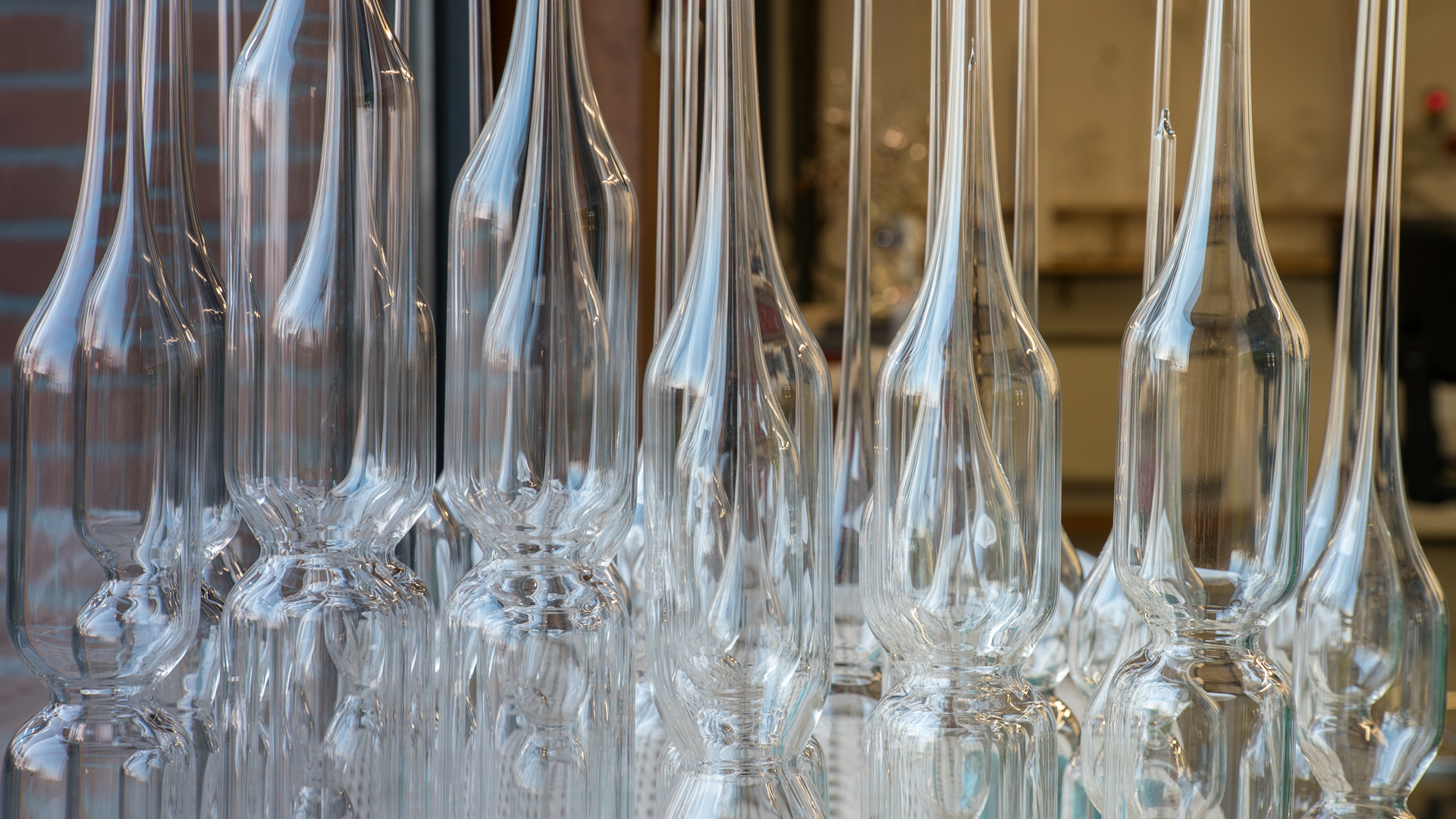
Don't Call Me 'Pyrex'
I am Borosilicate
Many of you are interested and passionate about what I do and often ask me what kind of material I work with.
In fact, not everyone knows that not all glass is the same, and each type has can have very specific characteristics.
For example, soda-lime glass represents 90% of the glass produced all over the world and it surrounds us with many products. Many companies use it in their processes since it is less expensive to produce and to source. It is also largely used in the artistic glass working thanks to its many good properties. But, as we all know, it can also break very easily and is very suscetible to thermal shocks.
In my Atelier, I use borosilicate glass, a different type compared to the common glass that surrounds us. This material was created in 1893 by the German chemist Otto Schott, founder of the homonymous company “Shott AG”.
Initially created for pharmaceutical uses, what was called “Duran” is a type of glass that contains boron trioxide (about 15%), the key ingredient that change the behavior of this material. In fact, this allows it to lower the coefficient of thermal expansion, or the index that measures the speed of expansion of the glass when exposed to strong heat, making it more resistant to sudden changes in temperature. Its stability and “robustness” have made it perfect not only for the world of chemistry, but also for many applications in the world of artistic processing and design.
It is such a unique and resistant material and that it is also used to store nuclear waste!
Borosilicate glass is often called “Pyrex”. But, this is partially incorrect. Let’s clarify: this type of glass first arrived in the American market in 1915, produced by the Corning Inc. and sold under the name of “Pyrex”.
But today, not all borosilicate glass can be defined as “ Pyrex”. Actually, we must say that nowadays the popular “Pyrex” glassware is no longer made in borosilicate glass. It is useless to deny that the products of this company have made this unique material famous but anyway, it is not correct to call all borosilicate glass “Pyrex”!
In my studio, for example, I use “ Duran” borosilicate tubes and rods, that are still produced in Germany by the company Shott AG.
The borosilicate market has been expanding significantly in recent years. This material born for scientific use, today becomes pure beauty in the field of artistic processing as well as the perfect material in design creations.
In lampworking, the technique that I use in my works, a torch burner is used to melt and soft the glass, and with the help of metal and graphite tools, it is shaped down to the smallest details.
Are you curious to know how I managed to develop my art thanks to lampwork and borosilicate glass? Let’s continue this journey together!
